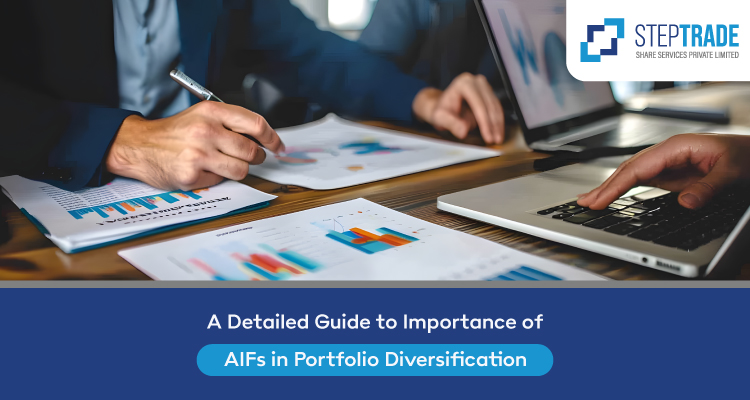Investors have traditionally relied on equities, bonds, and fixed deposits for wealth creation. However, as financial markets evolve, savvy investors are exploring new avenues to optimize returns.
One such investment option gaining significant traction is Alternate Investment Funds (AIFs). These funds provide access to diverse asset classes beyond conventional investments, offering opportunities for higher returns while mitigating risks through portfolio diversification.
In this guide, we will explore the importance of AIFs in portfolio diversification, how they differ from conventional investments, and why they are becoming a preferred choice for High-Net-Worth Individuals (HNIs) and institutional investors.
What is an Alternative Investment Fund (AIF)?
AIFs are specialized investment vehicles that pool money from investors to invest in non-traditional asset classes such as private equity, venture capital, hedge funds, infrastructure, and real estate.
Regulated by the Securities and Exchange Board of India (SEBI) since 2012, AIFs have gained popularity among High-Net-Worth Individuals (HNIs) and institutional investors seeking diversified investment opportunities.
Role of AIFs in Portfolio Diversification
AIFs play a major role in portfolio diversification, helping investors manage risk and enhance potential returns. Here’s how AIFs contribute to portfolio diversification:
- Access to Different Asset Classes
AIFs allow investors to diversify beyond traditional investments like stocks and bonds. By offering exposure to asset classes such as private equity, venture capital, infrastructure, and debt securities, AIFs help reduce portfolio risk and increase the likelihood of higher returns over time. - Geographic Diversification
Many AIFs invest in global markets or infrastructure projects in different regions. This global exposure reduces the risk associated with investing in one particular market or economy. Geographic diversification can protect a portfolio from local economic downturns. - Investing in Non-Correlated Assets
AIFs often invest in non-correlated assets, meaning their performance doesn't follow the same trends as traditional investments. For example, hedge funds and infrastructure funds may respond differently to market conditions compared to stocks or bonds, helping to mitigate overall portfolio risk. - Higher Return Potential
AIFs typically target higher-risk, higher-return opportunities, such as venture capital or private equity. By adding these to a portfolio, investors have the potential to generate significant returns that are less reliant on the performance of traditional financial markets. - Access to Alternative Strategies
Some AIFs, like hedge funds or debt funds, use complex strategies that are not typically available through traditional investments. These strategies, such as short-selling or arbitrage, can provide returns that are not correlated to the general market movements, enhancing diversification. - Long-Term Investment Horizon
AIFs, particularly in categories like infrastructure or private equity, typically have a longer investment horizon. This provides stability in a portfolio by balancing short-term market volatility with long-term growth prospects, which is especially beneficial in uncertain market conditions. - Increased Risk-Adjusted Returns
By adding AIFs to a traditional investment portfolio, investors can achieve a better risk-return tradeoff. A well-diversified portfolio that includes AIFs is likely to experience lower volatility and potentially higher returns than one limited to conventional asset classes like stocks and bonds.
How AIFs Improve Portfolio Diversification?
AIFs serve as an excellent tool for investors looking to diversify their portfolios. Here’s how:
| Factor | Traditional Investments | AIFs |
|---|---|---|
| Asset Classes | Limited to stocks, bonds, FDs | Includes private equity, real estate, hedge funds, etc. |
| Market Correlation | High | Lower correlation with traditional markets |
| Return Potential | Moderate | Higher due to alternative strategies |
| Risk Management | Market-dependent | Diversified risk exposure |
Growth of AIF Industry in India
According to data from the SEBI, the industry has seen substantial investment inflows, highlighting its increasing importance in the financial ecosystem. Key statistics highlight its growing interest across the categories of AIFs:
| Category | Commitments Raised in Rs. Crore | Funds Raised in Rs. Crore | Investments Made in Rs. Crore | % Total Commit-ments Raised | % Total Funds Raised | % Total Invest-ments Made |
|---|---|---|---|---|---|---|
| Cat. I | 84,862 | 46,845 | 40,578 | 6.5% | 8.9% | 8.0% |
| Cat. II | 10,02,672 | 3,50,77 | 3,19,760 | 76.8% | 66.6% | 63.1% |
| Cat. III | 2,17,645 | 1,29,66 | 1,45,838 | 16.7% | 24.6% | 28.8% |
| Grand Total | 13,05,179 | 5,27,28 | 5,06,176 | 100% | 100% | 100% |
(All net figures mentioned above are as of the end of the quarter on December 31, 2024.) (Source: SEBI)
Thus, AIF industry in India reflects the significant growth and diversification of the AIF industry in India, demonstrating its crucial role in shaping the country's financial landscape, with increasing investor interest across all categories.
Conclusion
AIFs represent a beneficial choice for investors aiming to diversify their portfolios and access exclusive investment opportunities. With their potential for high returns, reduced market dependency, and broad asset exposure, AIFs have become a preferred choice for HNIs and institutional investors.
For those looking to invest in AIFs, partnering with an experienced fund manager is crucial. Steptrade Share Service Pvt Ltd. provides professional expertise, strategic fund management, and personalized investment solutions to help you navigate the world of alternative investments confidently.
Contact us today to start your investment journey and explore new wealth-building opportunities!














